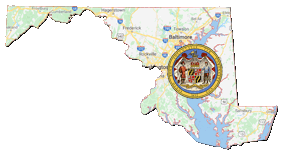
Historic Preservation Training Center News Release

National Park Service
U.S. Department of the Interior
Historic Preservation Training Center
4801A Urbana Pike, Frederick, MD 21704
(301) 663-8206 x109 Phone
(301) 663-8032 fax
For Release: October 8, 2002
Contact:
Tom McGrath, Superintendent
Judy L. Hayward, Preservation Education Institute, 802-674-6752, histwininc@valley.net
Historic Preservation Training Center Announces a National Best Practices Conference on Preserving and using Covered Bridges
FREDERICK, MD. - Less than 900 wooden covered bridges remain in a nation once linked by tens of thousands. The bridges convey an important chapter in the evolution of engineering practice in the United States and are popular with tourists and residents alike for their aesthetic contributions to rural landscapes from Vermont to Oregon. Many continue in service today as vital vehicular or pedestrian connections.
"With the breadth of these contributions to modern life in mind, a conference about the best practices in Covered Bridge Repair will take place at the historic Billings Center on the University of Vermont campus in Burlington, Vermont, June 5-7, 2003," said Historic Preservation Training Center (HPTC) Superintendent Thomas McGrath.
The HPTC is working with The Preservation Education Institute in Windsor, Vermont and the graduate program in historic preservation at the University of Vermont to present the conference. The conference is presented as part of the National Historic Covered Bridge Program funded under Section 1224(b) of the Transportation Equity Act for the 21st Century. The Federal Highway Administration (FHWA), in partnership with the National Park Service, Historic American Engineering Record (HAER), is undertaking a project to document significant covered bridges in the United States.
A call for papers has been issued and abstracts are due no later than December 9, 2002. Papers are sought for the following range of topics: case studies in covered bridge repair, documenting covered bridges, engineering analysis of wooden bridges, issues of species specificity, applying the Secretary of the Interior's Standards to wooden covered bridges, fire detection and suppression systems, disaster mitigation, fundraising strategies, maintenance programming, lost bridges, the case for building new wooden bridges, applying the timber frame craft to bridges, engineering insights into truss systems, and more. To receive a copy of the call for papers, please submit an email request to coveredbridges@uvm.edu or write to The Preservation Education Institute at PO Box 1777, Windsor VT 0589-0021.
The conference web site URL is www.uvm.edu/coveredbridges; it will be updated regularly. Registration may be made by writing to The Preservation Education Institute at PO Box 1777 Windsor, VT 05089 or via phone and fax, 802-674-6752 and 674-6179 respectively. Major credit cards, purchase orders, and checks are accepted.
Early registration for the conference is $210 if postmarked no later than February 28, 2003. Registrations postmarked between February 28 and May 1, 2003 will cost $250. Registrations after May 1 will cost $315. The conference registration fee includes all educational sessions, continental breakfast and lunch for two days, a bound volume of the conference presentations, and the opening reception. The third day of the conference will feature a selection of tours of Vermont and New Hampshire covered bridges for an additional fee.
The Historic Preservation Training Center is dedicated to the preservation and maintenance of historic structures of the National Park Service and its partners by demonstrating outstanding leadership in preservation education and skills and crafts development. The Center produces an on-going cadre of trained individuals who are placed in National parks upon completion of a three-year training program. The Training Center's preservation construction provided to parks and other Federal, state and local organizations use these projects as the training venue for its program participants. The Historic Preservation Training Center also provides preservation technical consultants to other units of the Service, Federal Agencies, and International preservation organizations.
The University of Vermont Historic Preservation Program offers a master's degree in historic preservation for highly motivated students seeking broad-based professional careers in historic preservation. Its intensive community-oriented approach integrates academic studies and research with professional skills development.
The Preservation Education Institute provides continuing education for building professionals, property owners and adults and children interested in American architectural heritage. Founded in 1983 as a division of Historic Windsor, Inc., a nonprofit historic preservation organization that had been established in 1971, the Preservation Education Institute is now the name by which its corporate parent conducts business. The Institute offers a series of workshops annually, a certificate program, and conducts on site training at historic properties throughout the United States.
The National Historic Covered Bridge Best Practices Conference is being planned for state and local highway engineers, state and county covered bridge maintenance personnel, volunteers charged with raising funds for the preservation of covered bridges, local and national covered bridge preservation organizations, historic preservationists, general contractors, structural engineers, covered bridge historians, the traveling public and community members. The conference organizers anticipate offering two to three conference tracks on subjects as diverse as bridge preservation case studies, best practices in maintaining covered bridges, and fund-raising strategies for municipalities and states. Proceedings will be published in print and in on-line formats.
The National Historic Covered Bridge Best Practices Conference will also be the first of its kind to collect and benchmark the vast array of information that exists on covered bridges by inviting all those concerned with covered bridge preservation to participate. A goal of the conference will be to develop a national reference base for evaluating various treatments of historic covered bridges in ways that will maintain their historic integrity as National Register properties. The conference also intends to promote a dialogue of the diverse ideas, experience, techniques and practices for historic covered bridge preservation.
